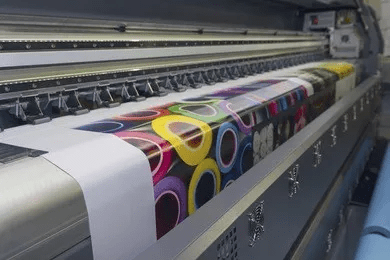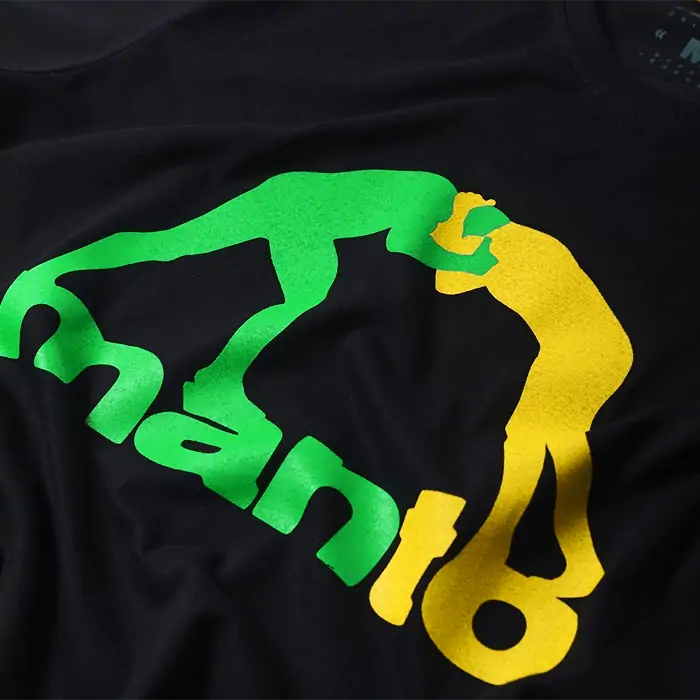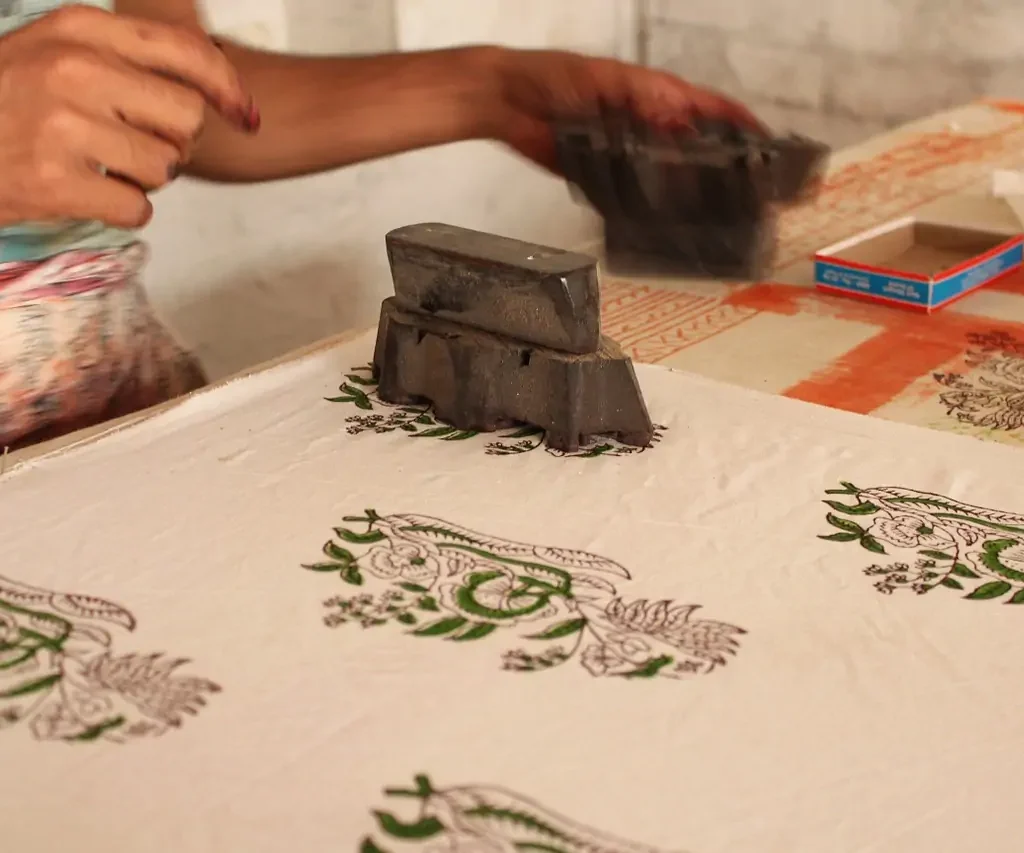Custom fabric printing is a cutting-edge process that allows for the creation of personalized and unique textile designs. Whether you are a fashion designer, interior decorator, or a DIY enthusiast, custom fabric printing enables you to bring your creative visions to life on fabric.
7 Ways of Custom Fabric Printing
Digital Printing
What is Digital Printing?
Digital printing is a modern method of printing that creating digital files (like PDFs or JPEGS) and then directly transferring these designs onto various materials, such as paper, fabric, or other substrates, using inkjet or laser printers.
Key Features of Digital Printing:
1. Precision and Quality:
High Resolution: Digital printers can produce very high-resolution prints, ensuring that even the smallest details in the design are accurately reproduced.
Color Accuracy: Digital printing offers a broad color spectrum and precise color matching, making it ideal for detailed and colorful designs.
2. Flexibility and Customization:
Small Runs: Unlike traditional printing methods that require significant setup time and costs, digital printing is cost-effective for small print runs. This makes it suitable for custom or limited-edition products.
Variable Data Printing: Each print can be different, allowing for personalized items without additional setup costs.
Process of Digital Printing on Fabric:
Design Creation:
The design is created or edited on a computer using graphic design software. This design is then converted into a digital file format suitable for the printer.
Printing:
The fabric is fed into the digital printer, which applies the design directly onto the fabric using inkjet technology. The printer deposits tiny droplets of ink onto the fabric in precise patterns to recreate the design.
Finishing:
After printing, the fabric may undergo additional processes such as heat-setting to fix the ink, washing to remove any excess ink or chemicals, and finishing treatments to enhance the fabric’s durability and feel.
Screen Printing


Screen printing is also called porous printing. It uses silk mesh, made from synthetic fibers like polyester or stainless steel, to create the screen version of printing. Pour the ink at one end of your screen plate. With the scraper, apply pressure on the ink. While moving the scraper at a regular speed, continue to move it towards the opposite end of the screen. This process will squeegee ink from the pattern to the fabric.
Screen printing is classified as water-based printing, plastisol, high density, puff, metallic gold/silver processes, and flocking print.
Sublimation vs screen printing
Sublimation and screen printing are two popular printing methods, each with distinct advantages.
- Sublimation: This process uses heat to transfer dye onto materials like polyester. It produces vibrant, full-color prints and is ideal for intricate designs and gradients. Sublimation is best for light-colored, synthetic fabrics and can be used on hard surfaces like mugs. However, it’s limited to specific materials and doesn’t work well on cotton.
- Screen Printing: This method applies ink through a mesh screen onto the fabric. It’s great for bold, solid colors and works on a wide variety of materials, including cotton. Screen printing is more cost-effective for bulk orders but less suitable for detailed, multi-colored designs.
Water Based Printing
Water-based screen printing is one of the simplest and cheapest printing methods of screen printing. It can be used on cotton, polyester, and other fabrics. Its principle of operation is similar to that of dyeing. Water based printing, unlike dyeing is used to dye a specific area of fabric into the desired color. The printed pattern has a high level of breathability and won’t fade. Water-based printing is suitable for fabrics in light colors.
Plastisol printing


Plastisol printing is a method of mixing dyes and a special chemical gel. The gel substrate allows dyes to adhere to fabrics firmly. This overcomes the limitations of water-slurry printing, which cannot print on dark colored fabrics.
Printing on polyester, nylon and other fabrics, as well as leather and synthetic leather, is possible with Plastisol. This product can be used for fluorescent printing as well as inkjet printing, blue floral printing, flocking electrostatic printing and many other printing processes.
High Density Printer


The high density printing is created by glue printing. This gives the printed pattern an 3D visual effect. This technology is best suited for casual and sports clothing. The patterns are usually numbers, letters or geometric patterns. The printed logo is beautiful and exquisite. Businessmen also use high density printing for flower patterns. These are usually seen on leathers or fabrics that are thicker in the fall and winter. High density printing is widely used and has a high reduction. It is also more expensive and more complex than water-slurry printing.
Puff Printing


The puff printing technique is used to create an elevated and 3D look on cotton and nylon fabric. The principle of puff printing is to add chemicals with high expansion coefficients in a specific proportion to glue dyes. Foam the pattern after curing it at 200-300 degrees. This technique has the advantage that it gives a strong three-dimensional look to printed patterns.
Metallic Gold/Silver Process


The metallic gold/silver model is a traditional and beautiful design, which is used mainly in packaging. The silk screen hot gold/silver printing process is a relatively new technique for fabric printing. To achieve the beautiful gold or metallic colors, a special chemical is added to the dyes. The color of the pattern will not fade. The metallic gold/silver printing process is widely used on different fabrics. It costs less than conventional printing techniques.
Flocking printing


Flocking is a new technique which involves the application of short fibers from various materials such as rayon or cotton onto a surface that has been coated with adhesive. The process adds a velvety or suede texture to the fabric, and allows vibrant colors by dyeing. You can enhance the tactile and visual experience by incorporating flocking into your design.
The Pros and Cons of Screen Printing
The Pros of Screen Printing
- Screen printing is a printing technique that can be used on a flat surface as well as a spherical, turbidal, or calling surface.
- Screen printing allows for a very thin ink layer, up to 1300 microns. This gives a strong three-dimensional feel to the printed pattern.
- The gloss of the printed pattern will not alter as temperature or light changes. Screen printing is perfect for outdoor advertising, signs and banners.
- The printing area can be as large as 3 meters by 4 meters or even larger.
The Cons of Screen Printing
- Color limitation. Screen printing is limited to one color.
- Not suitable for personalization. Usually, companies won’t offer small-scale custom printing because of its high price.
Heat Transfer Printing
Heat transfer printing, also known as direct-to-film printing (DTF printing), is a popular printing technique in the garment industry. This method prints patterns on specially designed paper, or pet film and then transfers them to fabric using a heat press.
Heat transfer printing is available in three main types: Direct-to-film (DTF) printing, sublimation transfer print and heat transfer vinyl.
Direct-to-Fabric (DTF) Printing
DTF printing has been increasing in popularity since 2021. DTF printing process is simple to operate and learn. Use DTF Printer for printing images on PET DTF film. Then, use powder shaker to spray, shake, and cure powder. Finally, transfer the images onto fabrics.
DTF printing can be used to create T-shirts and other apparel such as hoodies, pullovers or pants, hats and bags.
Heat Transfer Vinyl Printing
HTV, or heat transfer vinyl printing is also called heat transfer sticker printing. This technology uses heat transfer paper for printing patterns or texts on thermal material, and then a heat press machine is used to transfer them to fabrics or other substrates. HTV printing can be used for advertising posters, home decor items, T-shirts, and other substrates.
Sublimation Printing
Sublimation printing is a technique that uses specially-designed sublimation ink to print patterns on sublimation papers, and then transfer the patterns onto fabrics. The ink dye sublimates under high temperatures.
This feature allows the ink to be dyed inside the fabric under high temperatures. Sublimation printers, sublimation papers, sublimation dyes and heat presses are needed to finish sublimation print. Sublimation printing can be used for a wide range of products, including soft signage, fabric, sportswear, and personalized items.
Embroidery printing


The embroidery technique is a common one. Sewing is used to make it. The color of the embroidery is blended by overlapping and staggered multiple-color embroidery lines. Chinese printing can benefit from the unique rendering of Chinese paintings.
Direct-to-Garment (DTG) Digital Printing


Digital printing is the process of printing directly on fabric. DTG printers are used to complete digital printing. In this process, the DTG Printer sprays the water ink onto the fabrics to print patterns on clothes such as T-shirts. The surface of fabrics is colored with ink by printheads, to produce patterns that are high-quality and last a long time.
Pros and Cons of DTG printing
Pros:
- DTG printers use digital printing to produce patterns that are bright and delicate.
- Printing different patterns to meet the needs of customers for personalized design.
- DTG printer does not use any chemical products and will not harm the environment.
Cons:
- To prepare for digital printing, spray a pre-treatment solution on the fabric. Then, iron the fabric using a heat press machine. Spray ink on the fabric to begin printing.
- Fabrics limit. Fabrics must contain at least 60% cotton.
- High cost Cost of printer ink, consumables and related items.
Stamp Printing
In two simple steps, stamp printing can be completed. First, dye the fabric a monochromatic colour. Second, print patterns onto fabrics. The second step involves printing color paste that contains a powerful drifting agent capable of destroying the background dye. This method is used for producing flower cloths with dots on blue bottoms. Stamp printing is possible when bleach and dyes which will not react with bleach are mixed in the same color pulp.
The Pros & Cons of Stamp Printing
Pros
- The feeling of touch is soft.
- The print color is extremely bright.
Cons
- Fabrics printed with ink emit an odor. To eliminate the smell, water wash is required.
- The color fades easily and is hard to control.
- The cost of the sample is high and the cycle is long.
Block Printing


Block printing is one of the oldest and simplest forms of printmaking. It involves creating patterns or images on fabric or paper by using carved wooden, linoleum, or rubber blocks. Each block is carved by hand, making every design unique and showcasing the skill of the artisan.
If you are unsure about which fabric printing technique to go for, send an inquiry to an expert in the printing industry to help you make a decision.
Want to design your fabric? Contact us now.



